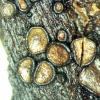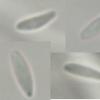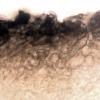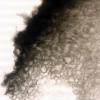
20-12-2025 23:08
Patrice TANCHAUDBonsoir, récolte sur sol sablonneux dans l'arri�

21-12-2025 09:32
Hello.A tiny ascomycete found embedded in wood in

20-12-2025 15:47
Mirek GrycHi.These grew on pine wood that was heavily covere

18-12-2025 21:17
Pol DebaenstThe identification took me to Byssonectria deformi

15-12-2025 07:09
 Danny Newman
Danny Newman
indet. Rutstroemiaceae sp. on unk. fallen leavesMc

19-12-2025 10:10
Patrice TANCHAUDBonjour, récolte réalisée en milieu dunaire, a

18-12-2025 17:23
 Bruno Coué
Bruno Coué
Bonjour,je serais heureux d'avoir votre avis sur c

Dear collegues,
I have recieved a collection of discomycetes from USA, which were held for a Mollisia species. Already after re-hydrating them and preparing a section, it was obvious that the whole apothecium is quite rubber-like and not soft as a Mollisia.
The excipulum is brown, in KOH greyish-brown, consisting of roundish-elongate cells, and an abundant subiculum was present. The medulla is a textura with cells having thick gelatinous walls.
Asci eightspored, IKI blue
The spores are fusifirm to elongate-elliptic, in KOH non-septate, but in a water mount they all looked septate even within the asci (!), approx. 5-7(8) x 2-2,5 µm
Any ideas on the genus at least?
thank you and best regards,
Andreas

is it impossible to get an idea of the paraphysis contents? Even if this sample is very old this must not be impossible. I assume you checked any behaviour against KOH?
The gel between the medullary cells is not that thick, is such impossible for a Mollisia?
Zotto

Dear Zotto,
the paraphyses had a refractive content and as far as I could see it was the whole length. But I didn't get the hymenium rehydrate properly, even not in KOH
KOH-reaction was negative.
The excipulum has no clear round cells, but only scattered roundish cells between unequal other cells. And a medulla of such kind I have never seen in Mollisia before, no sign of a textura intricata of thin hyphae.Already when cutting the apothecium it was completely different, like rubber and not soft as Mollisia is. I had the idea that this rubbery consistency might give an idea in which group this might belong to.
May be I should try a better section, but that has to wait ....
thank you and best regards,
Andreas






